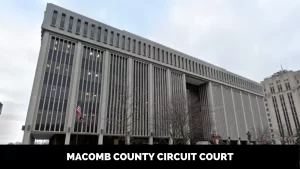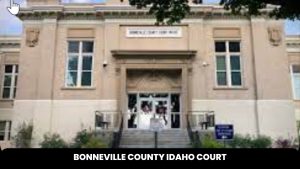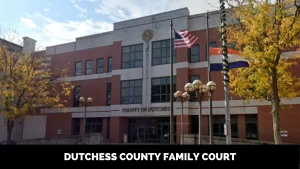Northern District of California
Overview of the District
The Northern District of California is one of four federal judicial districts in California. It covers the northern part of the state, including major cities like San Francisco, Oakland, and San Jose. With over 9 million residents, it is the most populous federal judicial district in the United States.
The Northern District spans 15 counties along California’s northern coastline, from Del Norte County on the Oregon border down to Monterey County. The district covers classic Northern California terrain, including redwood forests, winding coastal roads, and tech hub Silicon Valley.
Geographic Area and Population
The Northern District of California encompasses over 13,500 square miles. Its largest cities include San Francisco (pop. 884,000), San Jose (pop. 1 million), and Oakland (pop. 420,000). Nearly one out of every 10 Californians resides within the Northern District.
Demographics in the district vary widely between urban centers and rural counties. For example, Santa Clara County (home to San Jose) has a majority Asian population, while neighboring rural counties have higher white populations. Overall, no single race or ethnicity holds a majority in the diverse Northern District.
Federal Courthouses
The Northern District is served by four divisional courthouses located throughout the region:
- San Francisco Courthouse
- Oakland Courthouse
- San Jose Courthouse
- Eureka Courthouse
These courthouses host District Court and Bankruptcy Court proceedings, as well as other federal agencies like U.S. Probation and U.S. Marshals.
Brief History of the District
Congress established the United States District Court for the Northern District of California in 1850, shortly after California became a state. The court initially operated out of Monterey. In 1854 the court relocated to San Francisco, which remains the seat of the District Court today.
Early cases in the Northern District revolved around land claims and titles in the newly formed state of California. The court also heard admiralty and maritime cases arising from San Francisco’s bustling port.
In the 20th century, the Northern District became an important venue for antitrust suits against railroad and mining companies. Labor disputes in industries like shipping and agriculture also frequently ended up in the Northern District Court.
More recently, the Northern District has become a key forum for tech and internet cases. Tech companies such as Google, Apple, eBay, and Oracle regularly face patent litigation and other lawsuits in the Northern District.
Important Cases
Over its 170+ year history, the Northern District has shaped American law through its decisions in landmark cases:
- Korematsu v. United States (1944): Upheld the legality of Japanese internment camps during WWII.
- Perry v. Schwarzenegger (2010): Struck down California’s Proposition 8 banning same-sex marriage.
- United States v. Pacific Railroad (1887): Led to the breakup of the railroad empire controlled by the “Big Four” founders of the Central Pacific Railroad.
- Weeks v. United States (1914): Originated the “exclusionary rule” requiring illegally obtained evidence to be excluded from federal trials.
- United States v. Leland Stanford (1888): Resulted in Stanford University being seized from founder Leland Stanford and temporarily operated by the U.S. government.
Courthouses of the Northern District
The Northern District of California carries out its duties from four main courthouses spread across the region.
Phillip Burton Federal Building and Courthouse
The Phillip Burton Federal Building and Courthouse in San Francisco is the largest and best-known courthouse in the district.
History and Architecture
Built in 1964, the Phillip Burton Courthouse consolidates federal agencies from around the city into one central high-rise tower. The courthouse was designed in the stripped-down modern style popular in the 1960s, with little exterior ornamentation.
Originally named the Federal Office Building, it was renamed after Congressman Phillip Burton in 1983. Burton represented San Francisco in Congress for over two decades and was instrumental in preserving places like the Point Reyes Seashore.
An annex with courtrooms and offices was added to the courthouse in 1993 to expand its capacity. Renovations in the 2000s upgraded access and security systems.
Services and Tenants
The San Francisco courthouse houses courtrooms and offices for the Northern District Court, the Bankruptcy Court, and the 9th Circuit Court of Appeals.
Other federal agencies with offices in the building include the FBI, IRS, Immigration Court, Federal Public Defender, U.S. Marshals, and Senators Feinstein and Harris. The National Park Service also runs a visitor center on the ground floor.
Ronald V. Dellums Federal Building Courthouse
The Ronald V. Dellums courthouse in Oakland serves the East Bay portion of the Northern District.
History and Architecture
Opened in 1998, this large courthouse occupies a full city block in downtown Oakland. The 10-story building is sheathed in golden granite and has a dramatic arched entrance portico.
Originally called the Oakland Federal Building, it was renamed after Congressman Ronald Dellums in 2012. Dellums was an influential progressive politician who advocated for social justice and civil rights.
Services and Tenants
The Dellums courthouse contains over 20 courtrooms along with chambers and offices for District Court and Bankruptcy Court judges. Other federal tenants include the U.S. Marshals Service, U.S. Trustee’s Office, and a law library.
The building is also home to the grand jury for the Northern District. Their meeting room features soaring 30-foot ceilings capped by a massive glass pyramid skylight.
United States Courthouse in San Jose
Serving Silicon Valley and the South Bay, the San Jose courthouse opened in 1998 as the district’s first new courthouse in over 30 years.
History and Architecture
Located on W. Julian Street in downtown San Jose, this courthouse was designed in a postmodern architectural style. It has a distinctive facade featuring columns, arches, and red tile roofs reminiscent of early California missions. A central rotunda soars 72 feet over the lobby.
The courthouse was built to keep pace with San Jose’s rapidly growing population. A 2008 expansion added three new courtrooms.
Services and Tenants
The San Jose courthouse hosts court proceedings for San Jose’s division of the Northern District Court. There are 12 courtrooms along with District Court judges’ chambers and offices.
Other occupants include the U.S. Marshals Service, U.S. Trustee’s Office, and law library. The basement level houses holding cells operated by the Marshals.
Federal Judges of the Northern District
Federal judges are at the heart of the Northern District Court system. They preside over trials, approve settlements, and deliver rulings that shape laws affecting millions.
District Judges
There are currently 20 federal District Court judges across the Northern District of California.
Current Judges
Today’s Northern District Court judges were appointed by presidents as far back as Reagan and represent diverse backgrounds and ideologies. Current judges include:
- Charles R. Breyer – Brother of Supreme Court Justice Stephen Breyer
- Susan Illston – First female District judge in the Northern District
- James Donato – Former litigation partner at Cooley Godward
- Edward M. Chen – Former ACLU lawyer and Berkeley law professor
Notable Past Judges
Over the past 170 years, many legendary figures have served as Northern District Court judges:
- Ogden Hoffman – First judge appointed in 1851; namesake of the Hoffman federal building
- Robert Peckham – Oversaw 1970s school desegregation cases in SF
- William Orrick – Issued injunction against Trump’s executive order targeting sanctuary cities
Magistrate Judges
The Northern District also has 12 federal magistrate judges who handle preliminary case matters and criminal arraignments.
Current Magistrate Judges
Active Northern District magistrate judges include:
- Nathanael Cousins – Appointed in 2019 by open merit selection process
- Donna Ryu – Previously served on Oakland city council
- Susan van Keulen – Former litigation attorney at Morrison & Foerster
Notable Past Magistrate Judges
Past Northern District magistrate judges of note:
- Claudia Wilken – Oversaw controversial O’Bannon v. NCAA case on college athlete compensation
- Maria-Elena James – First Latina magistrate judge in the Northern District
- Edward Infante – Mediated the gender discrimination lawsuit against VC firm Kleiner Perkins
U.S. Attorney’s Office
Representing the United States government in the Northern District is the Office of the U.S. Attorney.
Overview and Responsibilities
The U.S. Attorney’s Office prosecutes federal crimes and defends civil cases involving the government. Its headquarters are in San Francisco, with branch offices in Oakland and San Jose.
With over 140 attorneys, the Northern District office is one of the largest U.S. Attorney’s Offices in the country. Its attorneys prosecute complex cases involving corporate fraud, terrorism, organized crime, and cybercrime.
Civil branch attorneys defend cases ranging from employment discrimination lawsuits against federal agencies to maritime accidents involving government vessels.
Notable U.S. Attorneys
Many renowned prosecutors have led the Northern District’s U.S. Attorney’s Office, including:
- Joseph Russoniello – U.S. Attorney under Reagan; led prosecution of Hells Angels
- Melinda Haag – Helped create DOJ’s Enron Task Force
- Brian Stretch – Oversaw prosecution of Raymond “Shrimp Boy” Chow organized crime case
- David Anderson – Current U.S. Attorney confirmed in 2018
U.S. Marshals Service
The U.S. Marshals provide security and transport prisoners for the Northern District Court system.
Overview and Responsibilities
Deputy marshals protect over 50 federal judges across the Northern District’s courthouses. They operate courthouse security checkpoints and provide additional security in courtrooms as needed.
The marshals also apprehend federal fugitives and transport prisoners to court proceedings from detention centers. Their Witness Security Program protects witnesses in high-profile cases.
Additionally, the U.S. Marshals Service manages assets seized from criminal enterprises – everything from cars to condos. They ensure assets are accounted for and sold off at auction.
Notable U.S. Marshals
Famous U.S. Marshals who have served in the Northern District include:
- Virgil Earp – Legendary Western lawman; deputized to guard Judge Stephen Field
- Carol Hallett – First female U.S. Marshal; oversaw security during Patty Hearst trial
- Greg J. Ahern – Current U.S. Marshal; 33-year veteran of Alameda County Sheriff’s Office
Famous Cases in the Northern District
Many landmark decisions have emerged from the Northern District’s courthouses over the past century.
Furman v. Georgia (1972)
Background and Ruling
Death row inmates in California and Georgia challenged their death sentences as “cruel and unusual punishment” prohibited by the 8th Amendment. In a 5-4 ruling, the Supreme Court agreed and effectively imposed a nationwide moratorium on capital punishment.
Significance and Impact
The Furman decision found arbitrary imposition of the death penalty constituted cruel and unusual punishment. It forced states to develop fair guidelines for seeking the death penalty. After Furman, executions did not resume until 1977 after new procedures were implemented.
Korematsu v. United States (1944)
Background and Ruling
When Fred Korematsu refused to report to an internment camp for Japanese Americans during WWII, he was arrested and convicted. Korematsu appealed his conviction, but the Supreme Court upheld the internments as constitutional.
Significance and Impact
Korematsu enabled the roundup and detention of 120,000 Japanese Americans during WWII. It’s now considered one of the Supreme Court’s worst civil rights violations rulings. In 2018, Korematsu’s conviction was finally vacated by a federal judge in San Francisco.
Perry v. Schwarzenegger (2010)
Background and Ruling
Two couples challenged the constitutionality of Proposition 8, a 2008 California ballot measure banning same-sex marriage. Judge Vaughn Walker ruled that Prop 8 violated the Due Process and Equal Protection clauses.
Significance and Impact
Though appealed up to the Supreme Court, Vaughn’s ruling paved the way for the resumption of same-sex marriage in California. It was an early victory for marriage equality advocates nationwide in advance of the 2015 Obergefell decision.
Practicing Law in the Northern District
The Northern District hosts a thriving legal community centered around its courthouses.
Joining the Bar
Attorneys must be admitted to the Northern District’s bar to appear before its courts. Admission requires an active California law license, sponsorship from a current district member, and completion of a moral character review.
The Northern District holds induction ceremonies quarterly at the San Francisco courthouse. New admittees recite an oath pledging to uphold ethical and civil standards.
Local Rules and Procedures
Litigants in the Northern District must follow the Local Rules of Court, which outline filing protocols, motion procedures, and other guidelines. The rules reflect the district’s case management preferences.
Attorneys also must familiarize themselves with judges’ individual procedural rules covering matters like page limits and continuances. Consistency, thorough preparation, and courtesy are paramount.
Finding Legal Resources
The Northern District maintains law libraries at each courthouse with federal case law, statutes, and Northern District records. These libraries are open to legal practitioners needing research materials.
Helpful online resources include the court’s Public Access to Court Electronic Records (PACER) system for docket research. The Northern District Bar Association also hosts seminars and events.
Getting Involved in the Legal Community
Volunteering for pro bono clinic programs run by the Bar Association is a great way for new attorneys to get experience and exposure. Mentorship programs pairing seasoned lawyers with bar admittees are also available.
For networking and career advancement, joining one of the district’s professional affinity groups like the Asian American Bar Association proves worthwhile.
Conclusion
The Northern District of California holds an outsized influence on American law and society. Guided by its rich history and vibrant legal community, the district will continue shaping our national character through its rulings. Litigants choosing this forum tap into 170 years of judicial wisdom. The Northern District’s tradition of innovation, progress, and conscience provides a court truly reflective of our diverse melting pot.
FAQs
What is the smallest county in the Northern District of California?
The smallest county by population in the Northern District is Del Norte County, with around 27,000 residents. It is located on California’s northern border adjacent to Oregon.
How many federal judges currently serve on the Northern District?
There are currently 20 District Court judges and 12 Magistrate judges active in the Northern District of California.
What was the first federal courthouse built in San Francisco?
The original Federal Building served as San Francisco’s courthouse after opening in 1905. It was located on 7th Street adjacent to the Post Office.
Which past Northern District judge went on to become a Supreme Court justice?
Supreme Court Justice Stephen Breyer previously served as a judge on the Northern District Court from 1980 to 1994. His chambers were in the San Francisco courthouse.
How can lawyers become members of the Northern District bar?
Attorneys can apply for admission by submitting an application, paying a fee, and getting sponsored by a current member of the bar. Admission is granted pending a background check and induction ceremony.



